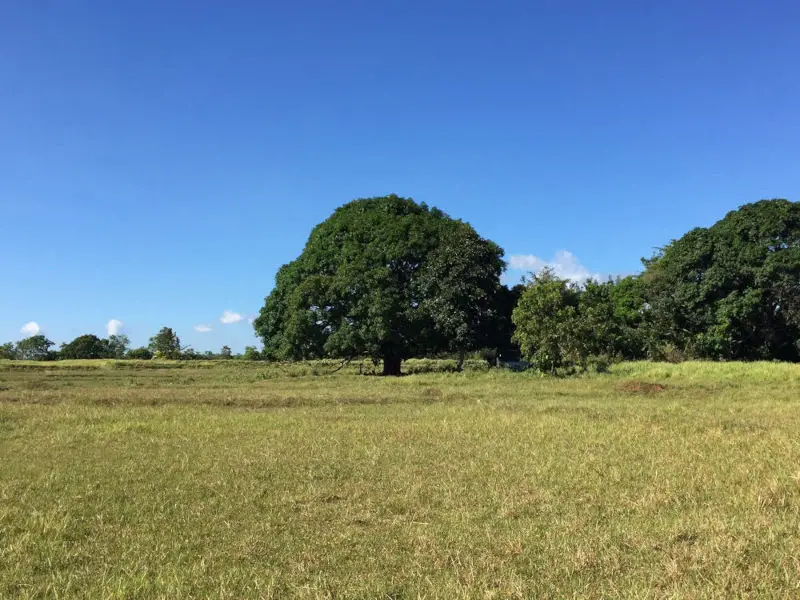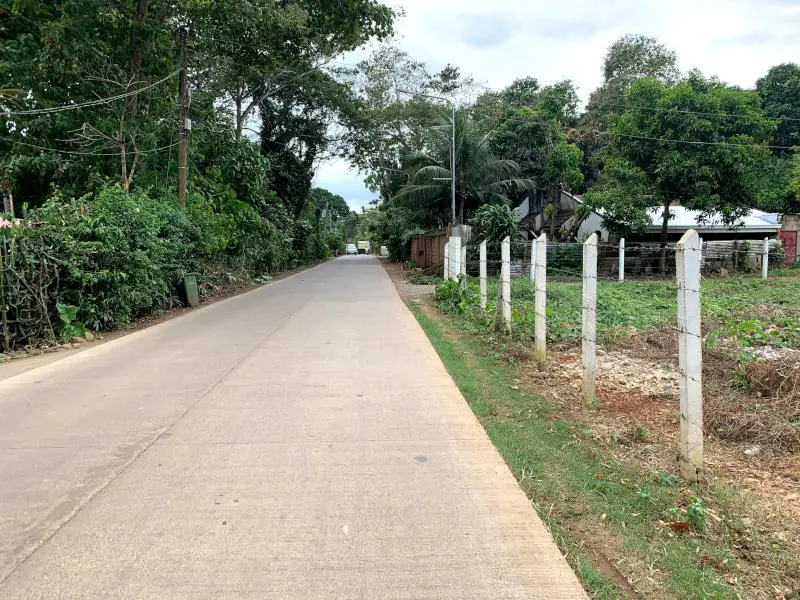One of the easier ways to get into real estate investing is to invest in a vacant lot, to invest in bare land. There are no tenants nor contractors to deal with. But is it a good call? Is investing in land a good idea? What are the pros and cons of investing in a vacant lot?
Here’s the gist of it.
Investing in land is a good idea if you’re able to buy ahead of economic development. But in actual fact, most expectations of future development are priced in the asking rates of land and you’re left with an investment with subpar returns.
Because of its subpar returns, the opportunity cost is high and investors are better off investing elsewhere. In this post, we’ll talk more about investing in land pros and cons: Why it might make sense, how it can be a poor investment alternative, and what this means for the common investor.
(The anecdotal elements of this article are based on investing in land in the Philippines, but I wouldn’t be surprised if the same takeaways apply to other countries. Feel free to read on.)

Page Contents
Investing in land pros
Whether it’s something I do or not, I’d be mistaken not to talk about the advantages of investing in land. There’s no doubting how some have made their millions through land investments. And there’s certainly no doubting how it’s a non-depreciating asset that fits a lot of portfolios.
Easier to buy
Investing in a parcel of land is relatively easier to do than buying most real estate alternatives. There are no tenant evictions to deal with (assuming you’re buying land without squatters), no contractors to manage nor repairs to watch over, and transferring titles is usually faster than house & lot purchases.
On top of the limited variables to consider, investing in land also involves less money. Not all vacant lots will be cheaper than an apartment, of course. But for apples-to-apples comparisons, buying land will usually be cheaper than buying land plus a structure.
No maintenance required
Somewhat related to the previous point, vacant land requires very little maintenance because there are no depreciating assets to keep. Setting up barriers is often recommended to prevent trespassers but, other than that, you can basically leave it as is.
Limited supply
Having a limited supply of any product in any market is always advantageous to the producer. And that’s the thing with land, they don’t make it anymore.
(Technically, reclamation projects are ‘manufactured.’ But those barely make a significant portion of the total land available, not to mention the high costs involved.)
Buy land, they aren’t making any more of it.
Mark Twain, writer and humorist
Create what you want
In real estate, the highest and best use (HBU) is an economic concept that says each property has a certain use with the most productivity.
This is why we see parking lots in the middle of business districts like Makati. The developers may have determined the feasibility of erecting a new high-rise building, for example, and found how the low-cost parking lot gives a better return.
By not investing in a structure, you choose to create the highest and best use of your land. It’s also arguably easier to sell. (But this last point doesn’t apply to investors who look for discounts on run-down structures.)
You can strike gold
There’s a street in Puerto Princesa, Palawan, called Baltan. It’s close to one of the main streets, but nothing else quite out of the ordinary. We found an 8-unit 145 sqm (1561 sq ft) property selling for Php3.5 million. I estimated the value (See How to Value an Apartment for Beginners) to be closer to Php2.1 million, so we ended up not buying the apartment.
But here’s the interesting part.
As part of our due diligence, we also learned about how much it cost our seller to buy the property in 2007. Php45,000! That’s not a typo. And even at our valuation of Php2.1 million, that’s a total return of 4,567% and a CAGR of 31.59% for 14 years.
But these jackpot instances are few and far between and it’s worth considering the tradeoffs of buying land. The world-famous Underground River, a UNESCO tourism site, was popularized around 2011, contributing to the significant growth of land values in Palawan.

Investing in land cons
The combination of limited supply and striking gold is what I think motivates most investors to buy land. There is a regard for perpetual price increases, due to the limited supply, and/or the upside potential is incredible.
In other words, there’s a feeling of assurance — a can’t go wrong mindset — because you either hit the jackpot or wait it out.
But that’s, unfortunately, a one-sided argument. Consider these disadvantages of investing in land.
Illiquidity
I won’t belabor this point because vacant lots are like any other real estate investment. Money invested in real estate is tied to your property and the costs to sell can be high.
Investing in land isn’t more or less liquid than other properties. But it’s still worth mentioning as one of the disadvantages of land investments.
No tax advantages from depreciation
For operating businesses, depreciation can be an advantage in the form of tax savings. When you invest in land with no improvements, you don’t get this benefit.
Negative cash flow
Not discounting how some vacant lots generate income from ad spaces or agricultural crops but, for the most part, empty lots do not generate substantial income.
And despite not bringing in income, the landowner still pays taxes. Investing in land is likely a negative cash flow investment. (But again, there are exceptions.)
An illusion that prices go up in perpetuity
A common misconception is for land prices to always increase. I can’t blame the community. When we consider how historical prices have gone up over the long run and the fact that there’s limited supply (see one of the advantages we talked about), it’s easy to see why the general public feels this way.
But consider how irrational investors (and that’s basically almost all of us) can push prices up to unreasonable levels. This can happen for many reasons. Maybe the general sentiment is positive, or there might be speculations of growth or some other random event we’ll never know.
Or also consider when growth is suddenly expected in an unknown area. Prices skyrocket, first to fair levels, but then go past fair valuation due to the buying momentum. And how can we be sure what “fair levels” are? It’s as good as speculation at this point.
The point is, any asset can be overpriced.
So if growth has been priced in but prices continue to rise beyond what’s sensible, expect the inevitable price drop. “When exactly” that happens is the paramount, yet unsolvable, question.
No advantages from forced appreciation
When savvy real estate investors decide on an investment, they consider the four ways properties build wealth. One of the ways investors take advantage of real estate is with the BRRRR investing strategy. This is where real estate investors buy dilapidated properties at discounts, renovate (rehab) the deteriorations in hopes of increasing the property by more than the cost to repair, and benefit from the perceived increase in value. That is forced appreciation in a nutshell.
By investing in land, there’s no structure to buy at a discount and there’s no opportunity to take advantage of this strategy.
High opportunity costs
With limited resources, buying a piece of land means not buying some other investment. We’re essentially taking funds away from other investments, and that means the investment you do choose to pursue is important.
The forgone income is part of your cost (i.e., opportunity cost) when you choose to buy land.
For example, let’s assume you have limited funds to invest, and both options below cost the same amount at Php1 million.
- Option 1: Vacant lot with no income
- Option 2: Small apartment with Php10,000/month cash flow
By choosing option 1, your opportunity cost includes the Php10,000/month that’s given up by not choosing option 2. (This means if you choose option 1, pretend that your costs include the land’s property taxes and Php10,000/month. And then decide if investing in land is worth it.)
Now, if you eventually sell the vacant lot at Php1.1 million next year, then that’s a positive yielding investment — you grew your land investment by 10%. In a vacuum that isn’t too bad.
Except when we consider how option 2 would’ve earned Php120,000 in cash flow, not even accounting for the capital appreciation of property number 2 (which might add another 10% if growth is comparable between the two), then the vacant lot becomes a bad choice.
This high opportunity cost should concern the smart investor.
Conclusion
Is land worth investing in? Like all other investments, the answer depends on your unique circumstances. Land can be a good investment if it’s bought at a good price. But then, prices typically (not always) reflect what’s in the news and we don’t necessarily have superior information over other investors. (What you know is probably what they also know.)
The non-cash-flowing nature of most land investments also means high opportunity costs compared to cash-flowing properties. But even this is a generalization and cash-flowing investments in land do exist.
That’s also not taking away from how some have prospered from land investments. But let’s do keep in mind that the jackpots are what we read in the news and what’s shared around.
Is investing in land a good idea? Well, it’s certainly an investment alternative worth considering if you truly understand the pros and cons.








